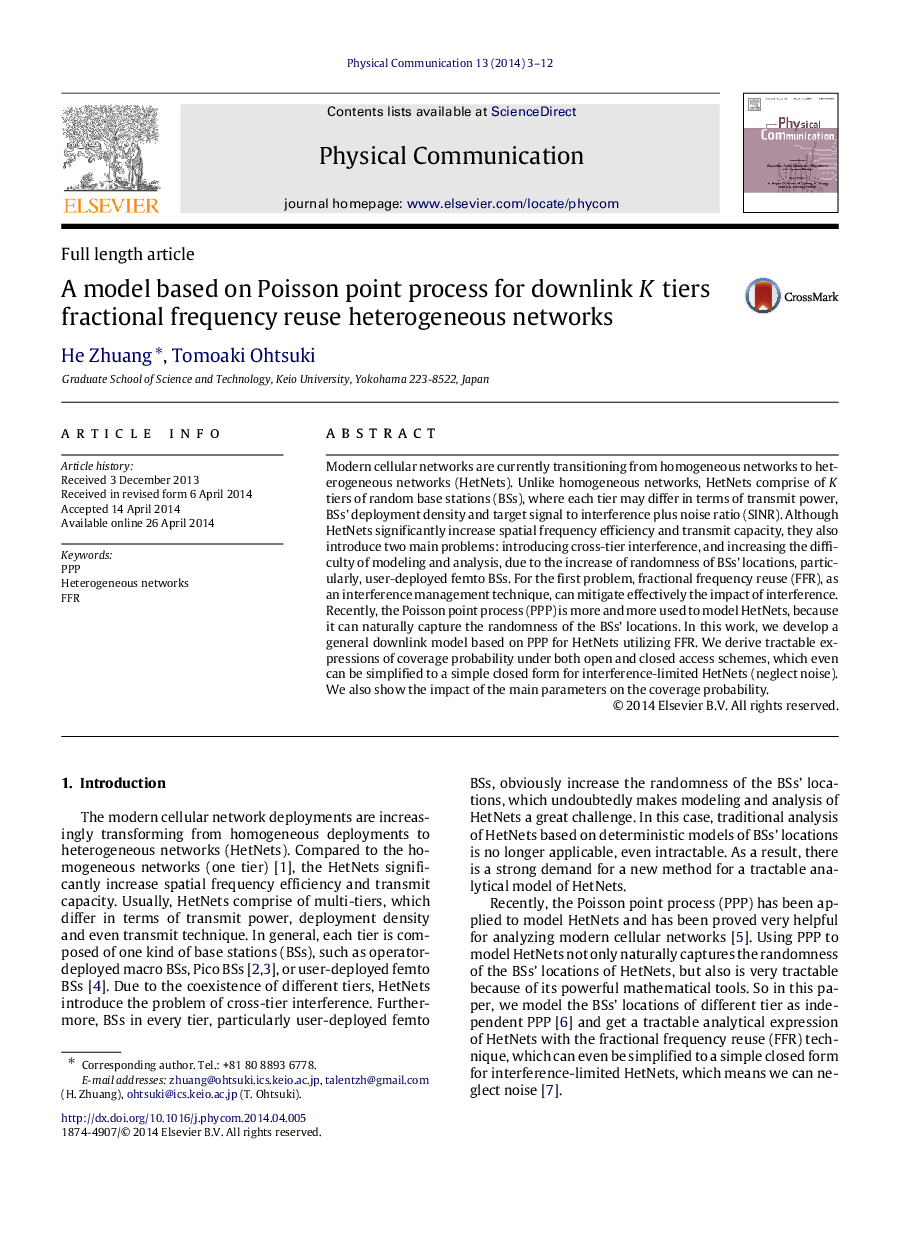| Article ID | Journal | Published Year | Pages | File Type |
|---|---|---|---|---|
| 465089 | Physical Communication | 2014 | 10 Pages |
Modern cellular networks are currently transitioning from homogeneous networks to heterogeneous networks (HetNets). Unlike homogeneous networks, HetNets comprise of KK tiers of random base stations (BSs), where each tier may differ in terms of transmit power, BSs’ deployment density and target signal to interference plus noise ratio (SINR). Although HetNets significantly increase spatial frequency efficiency and transmit capacity, they also introduce two main problems: introducing cross-tier interference, and increasing the difficulty of modeling and analysis, due to the increase of randomness of BSs’ locations, particularly, user-deployed femto BSs. For the first problem, fractional frequency reuse (FFR), as an interference management technique, can mitigate effectively the impact of interference. Recently, the Poisson point process (PPP) is more and more used to model HetNets, because it can naturally capture the randomness of the BSs’ locations. In this work, we develop a general downlink model based on PPP for HetNets utilizing FFR. We derive tractable expressions of coverage probability under both open and closed access schemes, which even can be simplified to a simple closed form for interference-limited HetNets (neglect noise). We also show the impact of the main parameters on the coverage probability.
